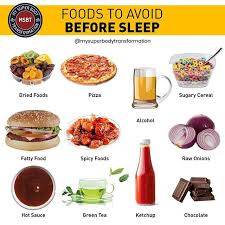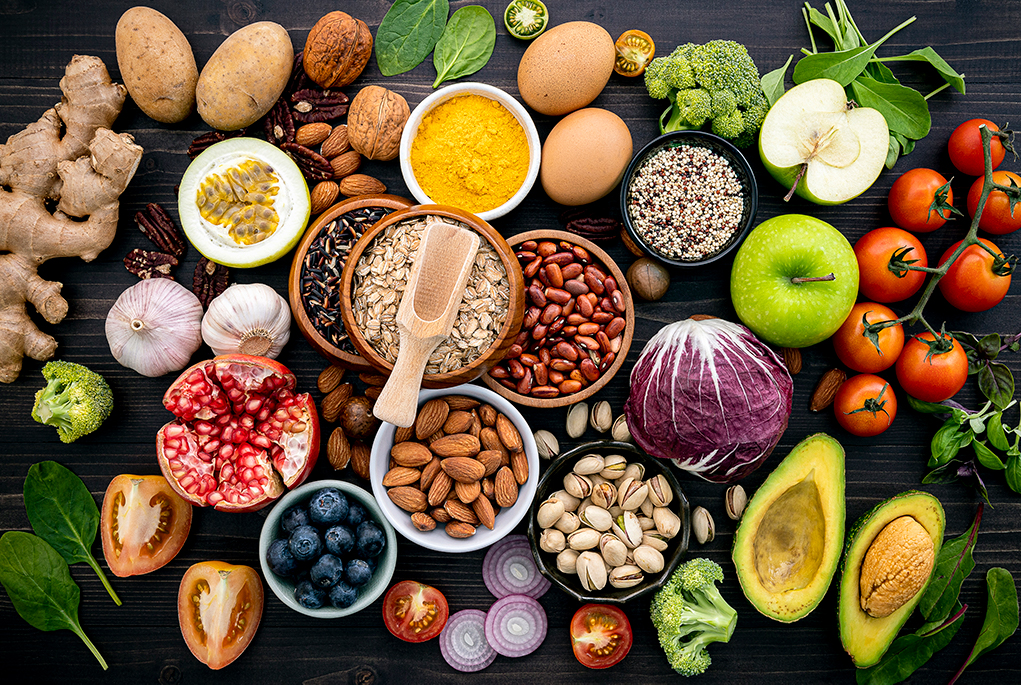
A flare-up can cause colitis to make it difficult for people to digest food. This is why it is so important to identify foods that colitis patients can eat. People with ulcerative colitis might want to reduce their consumption of potatoes because they contain high levels of glycoalkaloids. These substances can cause gas or bloating and may worsen symptoms. Moreover, consuming fried potato chips or skins can also worsen symptoms. Additionally, eating food high in sulfur is bad for the body. It can lead to excessive gas, cramping, and diarrhea. Experts suggest limiting the intake of sulfites and avoiding processed foods.
If you are trying avoid spicy foods, it's important to stay away. These contain capsaicin, which can be very irritating to the intestine lining and cause a flare-up. This can also cause colon problems, making it difficult to maintain remission. You can tolerate ground flaxseeds if you're able. These diets aren't for everyone. Talk to your doctor before beginning a low FODMAP regimen. Make sure you are comfortable with the choice.
You should eat a low-fiber diet if you have colitis. Fiber-rich foods are important for colitis remission. People with Lupus should eat bananas. Talk to a doctor about a simple elimination diet. Your goal is to identify what foods can trigger your colitis symptoms.

It is not recommended that you avoid foods that are rich in soluble or insoluble fiber. However, an IBD diet should include standard recommendations for healthy eating. Your colitis flare-up is unique so you need to tailor your food list. If you eat too much pasta and bread, you may develop diarrhea. You might be better off avoiding these foods during a flareup or choosing foods that are simple to digest.
While limiting dairy products and wheat is helpful in easing your colitis symptoms, cutting out certain food groups completely is not a good idea. Instead, focus on reducing your food intake. A gluten-free diet can be added to your existing diet. In addition to cutting out dairy products, a gluten-free diet should also be avoided. Limiting fiber-rich foods is a good idea if you're experiencing colitis flareups.
People with UC should limit their intake of dairy products because they may not be able properly digest lactose. Keep hydrated when you have a flare up. Greek yogurt can be consumed, even if you limit your intake of dairy products. It contains probiotics and has low lactose. Saturated fats are a reason to avoid milk.
You can generally stick to a diet high in fruits and vegetables. These are not recommended if you suffer from UC. They may cause an increase in inflammation. However, they can help reduce the symptoms of UC. Reduce your intake of foods that cause colitis flareups. Avoid eating raw eggs and vegetables if you have diarrhea. Avoid eating raw vegetables or eggs if you have colitis.

Salmon can also be eaten. Salmon oil is a great source of protein and can reduce inflammation. Other fish like tuna is also high in omega-3 fatty acids. It is important to cook fish in a way that does not reduce its nutritional value. When you eat fish, it is important that you increase your intakes of protein and calories. This will prevent you from developing colitis again and help improve your overall health.
Also, you should reduce fiber intake. Several sources of fiber contain high amounts of magnesium and folate. These foods should be avoided by people suffering from ulcerative bowel disease. Avoid foods high in fiber, as these can trigger colitis symptoms. Avoid processed foods, as well as products made from enriched white bread flour. They could lead to an increase in the risk of developing the disease. These should be avoided in order to get the best possible relief.
FAQ
How do I know what's good for me?
You must listen to your body. Your body will tell you how much exercise, nutrition, and sleep you need. To avoid overdoing it, it's important that you pay attention to what your body is telling you. Be aware of your body and do what you can to maintain good health.
Do I need calories to count?
Perhaps you are wondering what the best diet is for you. or "is counting calories necessary?" Well, the answer depends on several factors including your current health status, your personal goals, your preferences, and your overall lifestyle.
The Best Diet for Me - Which One is Right For You?
My current health, my personal goals and lifestyle will determine the best diet for me. There are many different diets, some good and some not so good. Some diets work better than others. What should I do? How do I make the right decision?
This article aims at answering these questions. This article begins with a brief overview of the various types of diets that are available today. Then, the pros and cons of each type of diet are discussed. The final step is to determine which one is right for you.
Let's start by taking a look at the various types of diets.
Diet Types
There are three types of diets available: ketogenic, high-protein, and low fat. Let's look at each one briefly.
Low Fat Diets
A low-fat diet restricts fat intake. This is accomplished by decreasing the intake of saturated fats such as butter and cream cheese. They are replaced by unsaturated fats such as avocados, olive oil, and cream cheese. For those looking to lose weight quickly, a low-fat diet is often recommended. This kind of diet could cause problems like constipation or heartburn and indigestion. It can also lead to vitamin deficiencies, if someone doesn't get enough vitamins in their food.
High Protein Diets
High protein diets reduce carbohydrates to favor of proteins. These diets have higher protein levels than other diets. These diets are intended to increase muscle mass and reduce calories. Unfortunately, they can't provide adequate nutrition for those who eat regularly. They can also be very restrictive so they may not be suitable for everyone.
Ketogenic Diets
Ketogenic diets are also known as keto diets. They are high on fat but low in carbs and proteins. Athletes and bodybuilders use them because they allow them more time and harder training without feeling fatigued. They do require strict compliance to avoid any side effects like fatigue, headaches, nausea, and headaches.
What is the difference between sugar and fat?
Fat can be a source of energy that is obtained from food. Sugar is a sweet substance that can be found naturally in fruits or vegetables. Both fats and sugars provide the same number of calories. Fats have twice the calories of sugars, however.
Fats are stored within the body and can contribute to obesity. They can lead to cholesterol buildup in the arteries, which could cause heart attacks or strokes.
Sugars provide instant energy and are rapidly absorbed by the body. This causes blood glucose levels rise. High blood glucose levels can lead to type II diabetes.
Statistics
- Extra virgin olive oil may benefit heart health, as people who consume it have a lower risk for dying from heart attacks and strokes according to some evidence (57Trusted Source (healthline.com)
- WHO recommends reducing saturated fats to less than 10% of total energy intake; reducing trans-fats to less than 1% of total energy intake; and replacing both saturated fats and trans-fats to unsaturated fats. (who.int)
- According to the Physical Activity Guidelines for Americans, we should strive for at least 150 minutes of moderate intensity activity each week (54Trusted Source Smoking, harmful use of drugs, and alcohol abuse can all seriously negatively affect your health. (healthline.com)
- nutrients.[17]X Research sourceWhole grains to try include: 100% whole wheat pasta and bread, brown rice, whole grain oats, farro, millet, quinoa, and barley. (wikihow.com)
External Links
How To
What does the meaning of "vitamin?"
Vitamins are organic compounds that can be found in foods. Vitamins aid us in absorbing nutrients from the food we eat. The body cannot make vitamins; therefore, they must be obtained from food.
There are two types if vitamins: water soluble, and fat soluble. Water soluble vitamins dissolve easily in water. Examples include vitamin C,B1 (thiamine), B2 (riboflavin), B3 (niacin), B6 (pyridoxine), folic acid, biotin, pantothenic acid, and choline. Fat soluble vitamins are stored in the liver and fatty tissue. Examples include vitamin D, E, K, A, and beta carotene.
Vitamins can be classified by their biological activity. There are eight major types of vitamins:
-
A - vital for healthy growth.
-
C - vital for proper nerve function, and energy production.
-
D – Essential for healthy teeth, bones and joints
-
E is required for good vision and reproduction.
-
K – Required for healthy nerves & muscles.
-
P - essential for strong bones, teeth and tendons
-
Q - aids digestion and absorption of iron.
-
R - Red blood cells are made from red blood cells.
The recommended daily intake (RDA), of vitamins varies with age, gender and physical condition. The U.S. Food and Drug Administration (FDA) sets the RDA values.
For example, the RDA for vitamin A is 400 micrograms per dayfor adults 19 years or older. However, pregnant women need 600 micrograms per day because it is important for fetal development. Children ages 1-8 require 900 micrograms per day. Infants under one year of age require 700 micrograms per day, but this amount decreases to 500 micrograms per day between 9 months and 12 months of age.
Children between the ages 1--18 years old who are overweight or obese require 800 micrograms per Day, while those who are overweight or obese need 1000 micrograms. To meet their nutritional needs, children underweight and obese require 1200 micrograms a day.
Children ages 4-8 years who have been diagnosed with anemia need 2200 micrograms per day of vitamin C.
2000 micrograms per person is necessary for general health. Women who are pregnant or breastfeeding need 3000 micrograms per day due to increased nutrient requirements.
1500 micrograms are required daily by adults over 70 because they lose approximately 10% of their muscle each decade.
Women who are pregnant or lactating need more than the RDA. Pregnant woman need 4000 micrograms daily in pregnancy, and 2500 per day after childbirth. Breastfeeding mothers need 5000 micrograms per day when breast milk is being produced.